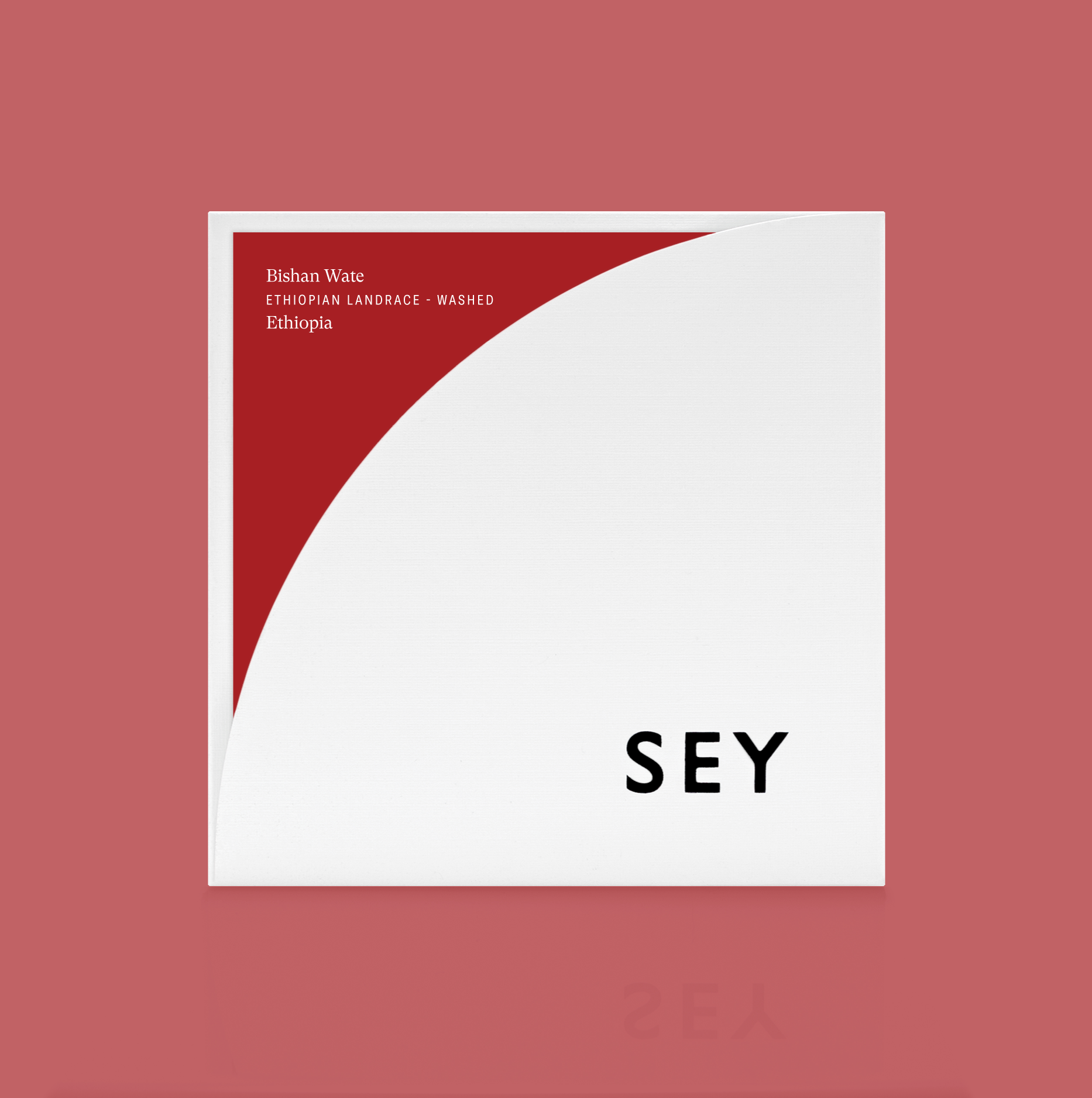
Our first year working with the Bishan Wate site in Hambela, Guji brought an unexpected standout on our buying tables this season. In the cup we find ripe berries, white peach, and lemon zest.
Ethiopian Landrace
Hambella, Guji
2,000 - 2,200 masl
January, 2025
Hand-picked at peak ripeness. Floated to further remove defects. De-pulped. Grade 1 density separated. Fermented underwater for 36 hours. Dried on raised beds for 10-14 days.
ABOUT BISHAN WATE
Bishan Wate is located in Hambela, Guji, in southern Ethiopia. While we have not previously purchased coffee directly from this site, it is surrounded by some of the most renowned names in Guji—many of which we have worked with over the years. Over the past decade, Guji has taken the coffee world by storm, producing exceptionally high-scoring coffees and earning a reputation alongside its famous northern neighbor, Yirgacheffe.
ABOUT ETHIOPIAN LANDRACE
Ethiopia is widely acknowledged as the geographic origin of coffee, and its production continues to represent about 10% of the country's gross domestic product. DNA testing has confirmed over 60 distinct varieties growing in Ethiopia, making it home to the most coffee biodiversity of any region in the world. Given the tradition of coffee production in Ethiopia and the political interworkings of the Ethiopian coffee trade, it is virtually impossible to get single-variety lots from Ethiopia. This is changing, albeit very slowly. Most Ethiopian coffees are blends of the wide Ethiopian varieties and are therefore referred to simply as 'Ethiopian Landrace.'
Pricing Details
FARM GATE (USD; GREEN)
~$5.26/KG
FOB
$11.34/KG
FOT
$13.27/KG
The cost of getting a coffee from cherry to beverage varies enormously depending on its place of origin and the location of its consumption. The inclusion of price transparency is a starting point to inform broader conversation around the true costs of production and the sustainability of specialty coffee as a whole.